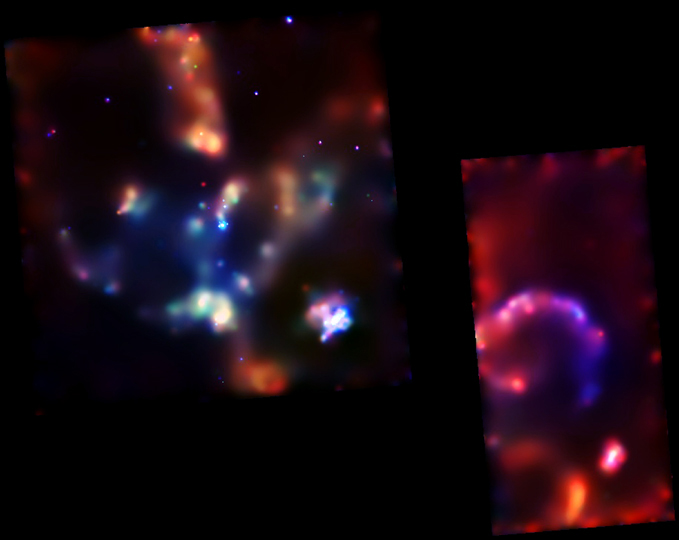
 Credit: NASA/CXC/Penn State/L.Townsley et al.
Credit: NASA/CXC/Penn State/L.Townsley et al.
True-Color Tarantula
The Tarantula
Nebula (30 Doradus) in the Large Magellanic Cloud is the most active
region of star formation close to the Milky Way. X-ray imaging of
starburst regions like the Tarantula nebula help astronomers peer through
the murk of interstellar gas and dust to see how young, massive stars form
and interact with their nurseries. Now the Chandra X-ray Observatory has
added an extra dimension - that of X-ray color. The image above is a
"true-color" image ("true-color" if we had X-ray vision, that is) of the
X-ray emission from the Tarantula Nebula. In this image cooler material
emitting lower energy X-rays appears red, while hotter material emitting
medium energy X-rays appears green, and the hottest material, emitting the
highest energy X-rays detectable by Chandra, appears blue. The brightest
source in the center of the image is known as Melnick 34, a 130 solar-mass
star located slightly to the lower left of center. On the lower right of
this image is a supernova remnant N157B, with its central pulsar.
Last Week *
HEA Dictionary * Archive
* Search HEAPOW
* Education
Each week the HEASARC
brings you new, exciting and beautiful images from X-ray and Gamma ray
astronomy. Check back each week and be sure to check out the HEAPOW archive!
Page Author: Dr. Michael F.
Corcoran
Last modified April 28, 2002


